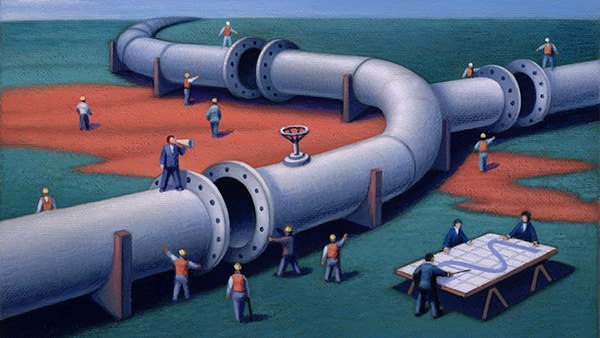You can imagine what it feels like to be a VIP in the group you belong to only to find yourself, because of your increased donations to the charity you love, at the bottom of the heap, neglected and ignored.
This is what often happens when the mid-level donor team hands off a donor to the major gift team.
I got drawn into this subject by an MGO of a client of ours who was complaining that a recent donor was not happy with the way he (the donor) was being handled after such a hand off had occurred. Gone was the immediate and quick attention the mid-level “rep” had given. Gone was the frequency of contact and the “feeling” that the donor had mattered. It was not a good situation.
As I dug into it further I realized that an often used (and important) tier strategy in major gifts was the culprit and that, most likely, no one had thought about the consequences of applying this migrating strategy to mid-level donors.
You can visualize this situation by using a couple of stacked pyramids as pictured below:

The red pyramid represents the major donors who are sorted high inclination/capacity at the top and lower inclination/capacity at the bottom. This is the normal and recommended way donors are tiered in a caseload. We recently wrote about this in the post “Caseload Mix”. The “high value” donors get more time and more attention, the lower value donors less.
Now go to the light grey pyramid. This pyramid represents the mid-level donors. If managed correctly, they are also sorted high to low, in terms of current and potential value, just like the major donors.
Where the grey pyramid overlaps into the red demonstrates the migration of mid-level donors to the major gift team. And that is where the problem is.
If the manager of major gifts or the MGO inheriting a mid-level donor who has “graduated” doesn’t watch it, the donor will move from a higher touch environment in the upper end of the mid-level pyramid to a lower touch environment near the bottom of the major gift pyramid. This, as you can imagine, will not be good for the donor.
There are several things Jeff and I recommend to make sure this doesn’t happen to your donors:
- Audit the strategies of your mid-level and major donor program to measure whether the dynamic we are talking about here is present. If it is, take steps to correct it as suggested in the following points.
- Adjust the quality and frequency of contact of the lower end of major gifts so it will at least match, if not surpass, the quality and frequency of contact of the upper end of the mid-level program.
- Make sure the MGO is sensitized and responsive to these changes. It is important to have a discussion and possibly some training on this subject so that all those involved, on both sides, understand the need to create and maintain a seamless experience for the donor as she moves up into major gifts.
- Make sure the mid-level and major gifts teams meet frequently to compare strategies and approaches to donors. In some organizations, strangely, these two teams are not managed by the same person. Major gifts is separate from direct marketing, while mid-level is anchored to the direct marketing program. I’m not going to get into the politics of this arrangement here, because politics is usually all it is, but suffice it to say that keeping these teams separate, either in management or communication, is hazardous to your donor program. The last thing a donor needs is to be jerked around by competing management systems and philosophies.
- Review this area at least every six months to avoid drift and entropy. It is an absolute law that any system (actually anything), if left alone, will decay, decompose and reduce down into a lesser place. And because the MGO is so (rightly) focused on the high value donors on his caseload, he will have a tendency not to mind the donors migrating onto his caseload.
Your donors deserve a seamless experience as they migrate up in your organization. I know you know that they all should be treated with care and value. But I also know you are aware that it is good stewardship to manage the higher inclination and capacity donors with more personalized communication.
Just be sure that the path between mid-level and major gifts makes sense, is consistent, and honors the donor.
Richard







I have been interested in the idea of stewarding mid-level donors for a while and now I’ve gotten myself into trouble. 🙂 I’ll be getting a caseload soon and making my introductory round of calls to those people in response to a year-end mailing we’ve sent. So now the rubber meets the road and all the great ideas I’ve been reading about are taking a backseat to the practical questions – do I just tell them that I am their point person in the organization? Do I actually ask them if they want me to call them periodically? Should I try to personalize any/some of their mailings or just send my own notes from time to time? How often should I try to have contact with them?
Thanks for all the great information you’ve given me already that I didn’t have to ask about just now.
All your questions are answered in one or more of past posts on this blog. But, to get right to the points….you do need to qualify your caseload. By that we mean contacting each donor and determining if they want to relate to you. If not, leave them in DM. Your intro letter should state that you are their donor relations person and that you are here to help. Once you know they want to relate your primary task is to uncover their passions and interests and serve them in the months ahead, including an appropriate ask once you have gotten to know them. There is more detail on past blogs…
Thanks for writing.